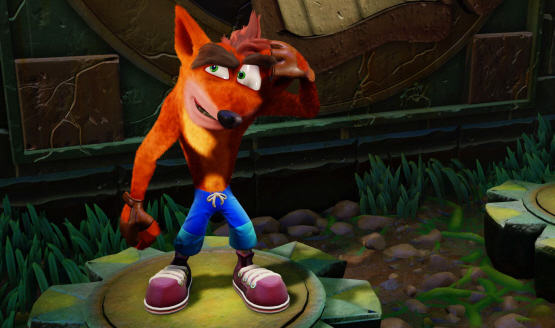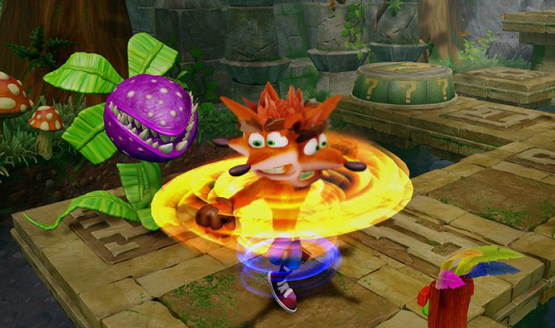
When the PlayStation released worldwide in 1995, the powerful home console was lacking one major thing: an icon. Games like Battle Arena Toshinden, Warhawk and Ridge Racer all impressed gamers at the time, but none of them featured a marketable character like Mario or Sonic. All of that changed in 1996, when a small studio called Naughty Dog changed the gaming landscape with a 3D platformer called Crash Bandicoot.
The wacky marsupial quickly became PlayStation’s mascot, and was representative of the brand itself. Looking back the decision was slightly odd, as the series was owned by Universal Interactive Studios, but it made sense at the time since Sony had an exclusivity deal at the time as the series’ publisher. So, from 1996 onward, when gamers thought about PlayStation, they pictured Crash Bandicoot alongside it.
Good things don’t last forever, though. The deal between Vivendi Universal and Sony Computer Entertainment ended in 2000 with the release of Crash Bash, the first non-Naughty Dog developed title in the series. This saw Sony’s biggest icon at the time go multiplatform, which was genuinely shocking, and start appearing on Nintendo and Xbox systems. What followed was a drop in quality, too many yearly releases, and then a long hiatus that is finally ending thanks to the release of the N. Sane Trilogy.
A Brief History of Crash Bandicoot
The beginnings of Crash Bandicoot can be traced to Naughty Dog being in rough financial shape in the early 90s. While it’s hard to imagine the Uncharted and The Last of Us developer not being successful today, they failed to find much success early on. In a last ditch attempt to save the studio, the team partnered with Universal Interactive Studios on a several game deal. The first title was a forgettable fighting game called Way of the Warrior, but the second game on the deal ended up being a huge hit that guaranteed that Naughty Dog had a feature.
Called Crash Bandicoot, Naughty Dog created a 3D platformer that showcased all of the strengths of Sony’s home console. It had impressive graphics that blew Super Mario 64 out of the water, simple gameplay that anyone could get into, and memorable boss fights. It quickly became one of the PlayStation’s best selling titles, and became the system’s mascot thanks to a marketing push by Sony.
Naughty Dog wasted no time capitalizing on the success of their 1996 hit, as they released a sequel the next year called Cortex Strikes Back. It didn’t reinvent the wheel in terms of gameplay, but the studio put out an even more polished game that looked and played better than its predecessor. This yearly release pattern would continue with a third platformer called Warped. The series ended on the original system with two spin-offs that took the series in two new directions, as Crash Team Racing was an excellent racing game, and Crash Bash was a solid party game.
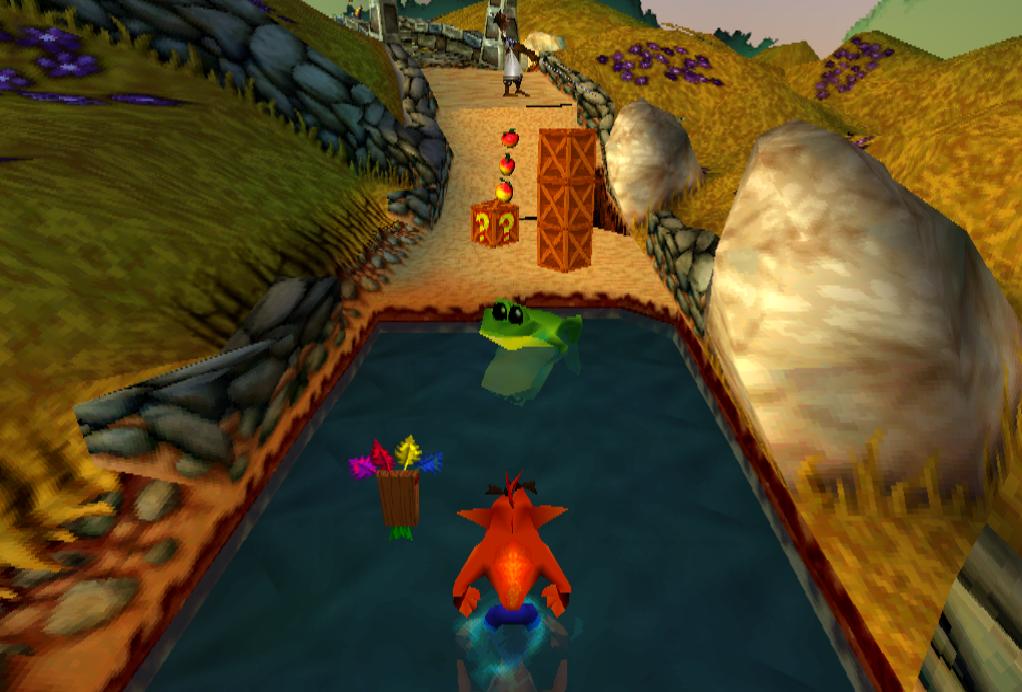
As noted previously, the deal between Universal and Sony came to an end after Crash Bash. This led to Traveller’s Tales’ The Wrath of Cortex getting released on Xbox and Gamecube after debuting on PS2. While not a bad game, The Wrath of Cortex did little to top Naughty Dog’s 1998 release. This was a major problem in 2001, as the game that was trying to capture the magic of the past had to compete with games that were moving platformers forward (like Naughty Dog’s Jak and Daxter).
This kicked off a decade that was defined by mediocrity. No matter who was developing Crash Bandicoot, be it Traveller’s Tales or Radical Entertainment, the end result was always a middling title that failed to impress. Even attempts to recapture the magic of Crash Team Racing failed as Nitro Kart and Tag Team Racing ended up being merely okay. Overall, it was a huge fall from grace for a franchise that once was the symbol of quality.
2008’s Mind over Mutant marked the final Crash Bandicoot game for consoles, as the series went into a hiatus shortly afterward. While nobody wanted a Crash game in 2010, nostalgia is a hell of a thing, and after a few years people started to clamor for a new title in the series. Activision, who now owned the franchise after merging with Vivendi Games in 2008, saw the demand for a new game, and are now bringing the series back with a remake of the original trilogy. After 20 years of spinning, Crash Bandicoot has gone in a full circle to return to his roots.
Ludography
The Future
It’s certainly an exciting time to be a Crash Bandicoot fan as the N. Sane Trilogy looks to be a solid remake of the original platformers. Vicarious Visions is a talented studio, and if the collection ends up being a big success for Activision then it would make sense for a new Crash game to be made. We could be seeing a comeback for the ages happen right before our eyes, and that’s an incredibly exciting prospect.
A lot is riding on the N. Sane Trilogy, as the Crash Bandicoot series went from being one of gaming’s greats to a washed up memory of a bygone era of 3D platformers. This gives Activision a chance to restore the series’ reputation, and the ability to recapture the magic that won gamers’ hearts 20 years ago. Who knows, a successful remake could even pave the way to a new era of high-profile 3D platformers beyond Mario.
Crash Bandicoot Retrospective
-
Crash Bandicoot (1996)
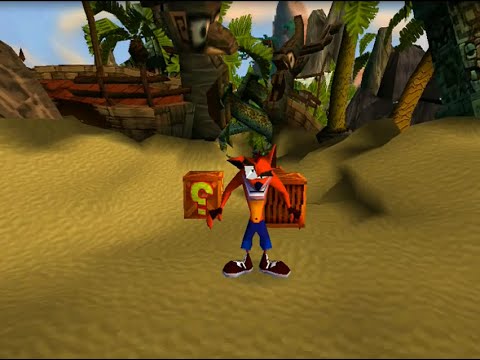
The 1996 original was the right game at the right time. The PlayStation was a console without a real mascot, and Crash Bandicoot was able to fill that spot. It helped that the game he starred in was great, as its 3D platforming was innovative at the time of release.
-
Crash Bandicoot 2: Cortex Strikes Back (1997)
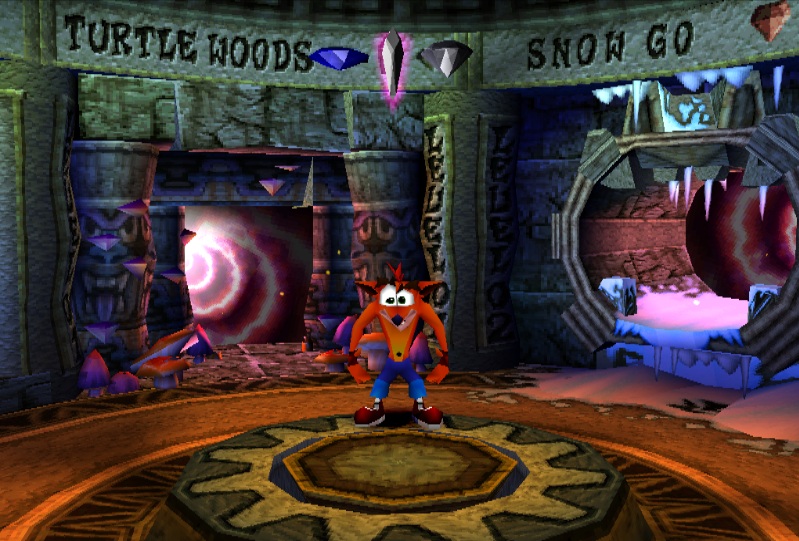
Since Cortex Strikes Back released only a year after the original, it was hard for the sequel to break new ground. That was absolutely fine by gamers, though, as PlayStation fans couldn't get enough of Crash Bandicoot at the time. While there weren't huge changes, it did feature more polish than its predecessor, and managed to be a better game overall.
-
Crash Bandicoot: Warped (1998)
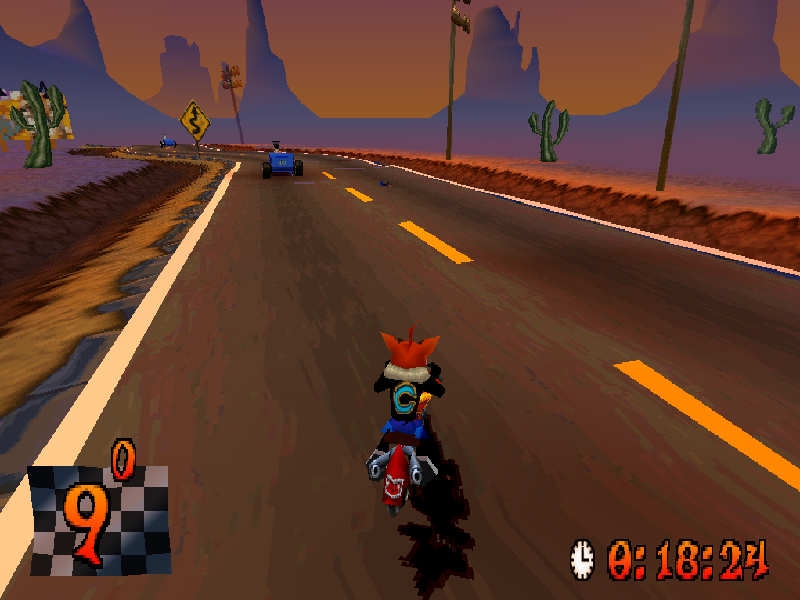
It's truly incredible what Naughty Dog managed to do with just 10 months of development time, as Crash Bandicoot: Warped managed to introduce three new gameplay mechanics (airplane, jet-ski and motorcycle levels). This led to a game that still featured the 3D platforming that fans had come to love, while also feeling fresh thanks to the many new ideas. It was a great way for the trilogy to end.
-
Crash Team Racing (1999)
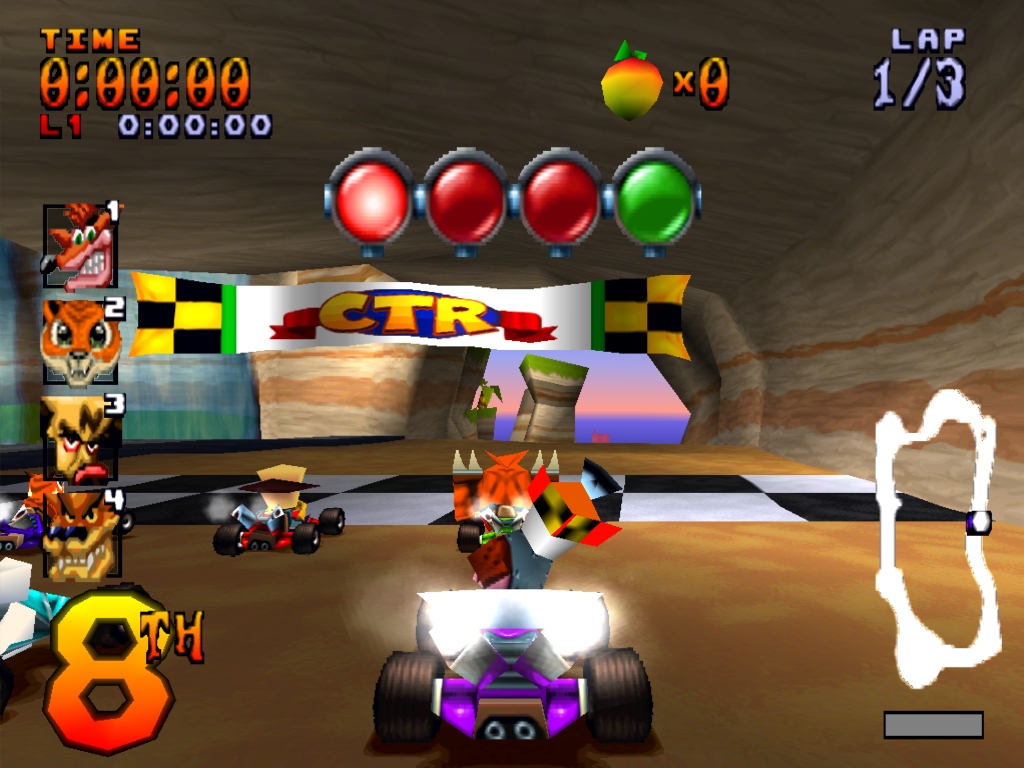
After starring in three well-received platformers, Crash Bandicoot took an unexpected turn into the world of kart racing. Despite the sudden shift in genres, 1999's Crash Team Racing actually ended up receiving a better critical reception than previous titles in the series. It showed that developer Naughty Dog had the chops to do more than just platformers, and would be their final Crash game even if fans didn't know it at the time.
-
Crash Bash (2000)
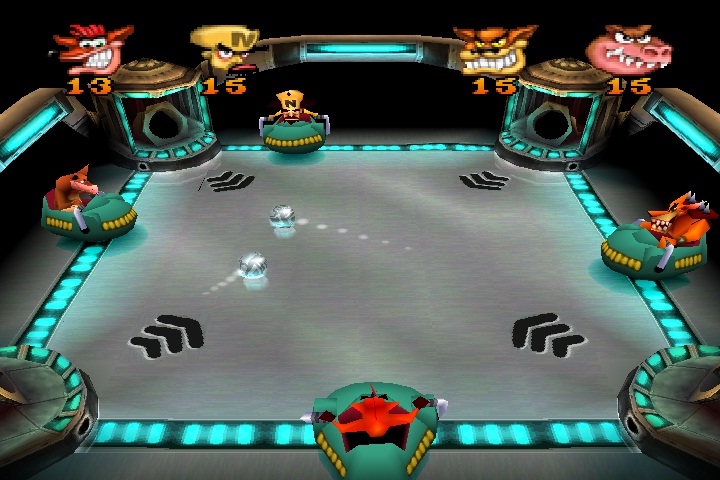
Considering that Crash Bandicoot was essentially Sony's answer to Mario at this point, it made sense that he'd challenge the mustachioed plumber in another genre. This time around it was party games, as Crash Bash was the closest thing that PlayStation gamers had to Mario Party. Developed by Eurocom Entertainment Software, it ended up being a solid collection of mini-games, filled with the series' signature charm, but wasn't up to the same level of past games. It also has the distinction of being the final Crash game published by Sony.
-
Crash Bandicoot: The Wrath of Cortex (2001)
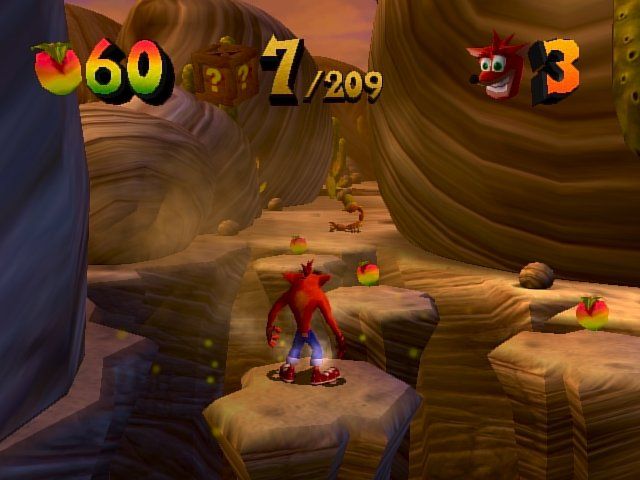
Crash Bandicoot's return to platforming was originally meant to be a free-roaming title designed by Mark Cerny, but that project never saw the light of day due to the end of Vivendi Universal's deal with Sony. As such, Traveller's Tales was contracted to create a new entry in the series. As they only had a year to develop The Wrath of Cortex, the game ended up going back to the original's gameplay style. This made it feel like more of a knockoff than a true step forward.
-
Crash Nitro Kart (2003)
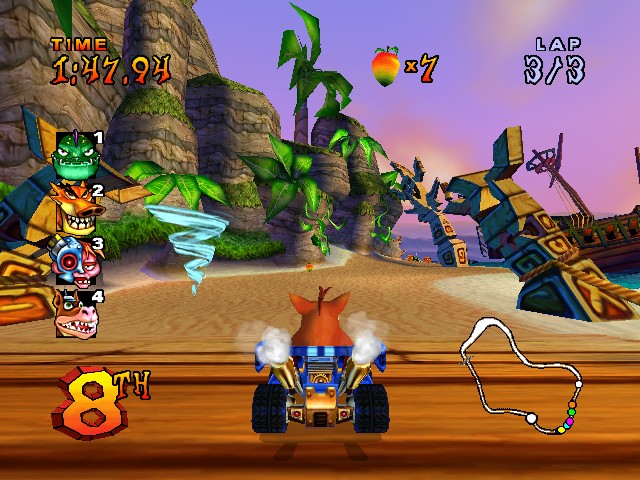
After a rocky start to the new era of Crash, Vicarious Visions got the series back on track by releasing two very solid platformers on Game Boy Advance. They then developed the next console game, Crash Nitro Kart, which was a sequel to Crash Team Racing. While it wasn't a bad game, it once again failed to live up to the expectations of gamers, who expected another top-notch racing game.
-
Crash Twinsanity (2004)
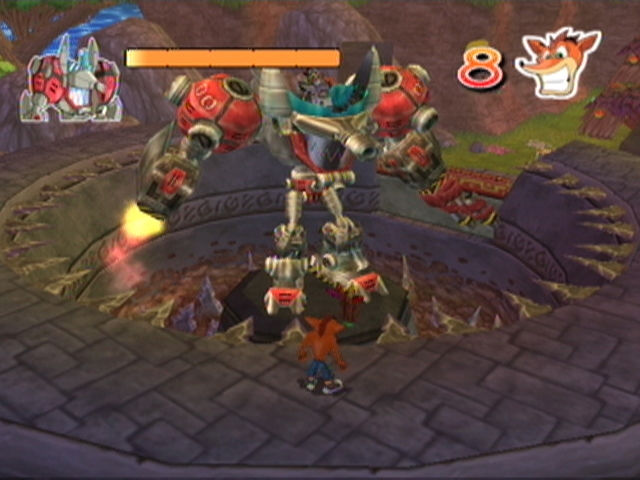
As Vicarious Visions went back to working on handheld Crash Bandicoot games (this time working on a crossover with Spyro), Traveller's Tales was ready to give the series another shot. In order to compete with modern platformers, Crash Twinsanity was set in a free-roam environment similar to games like Jak and Daxter. While this evolution of the gameplay was probably the right move, Traveller's Tales once again failed to deliver a top-notch product. Instead they created a forgettable 3D platformer that couldn't compete with a genre that was rapidly evolving.
-
Crash Tag Team Racing (2005)
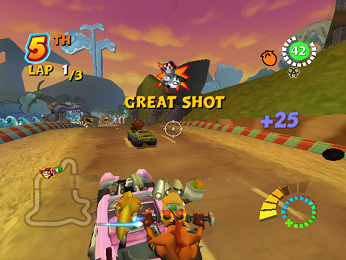
After another disappointing outing, Vivendi looked to developer Radical Entertainment to breathe some new life into the series. This resulted in a new racing game called Crash Tag Team Racing, which added new mechanics such as being able to fuse together with an opponent's car in order to take control of a turret. Despite some cool ideas, the game once again failed to be something special.
-
Crash of the Titans (2007)
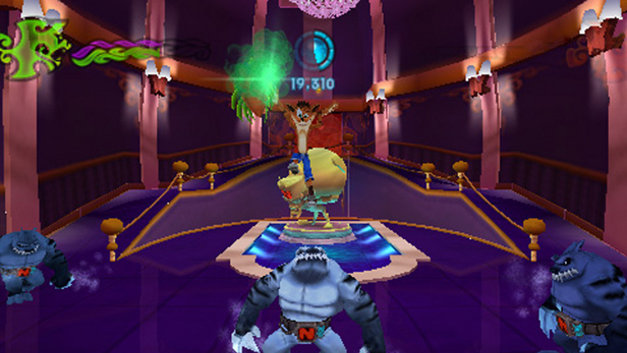
Two years later Radical Entertainment would create their first Crash Bandicoot platformer. Called Crash of the Titans, it took the series in a new direction as combat became the core focus. This decision met a mixed response, but even those that liked the combat recognized that the series once again failed to reach its past heights.
-
Crash: Mind over Mutant (2008)
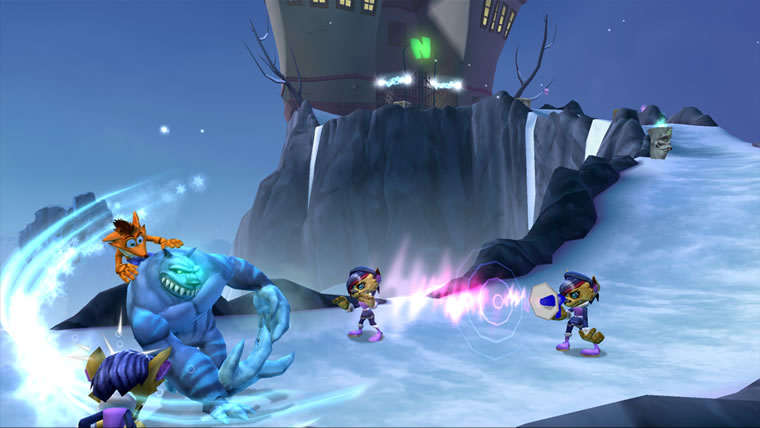
Radical Entertainment's third and final Crash Bandicoot game ended up being the last title in the main series to be released. Building upon Crash of the Titans' combat, Mind over Mutant now allowed players to take control of Titans, and took place in a free-roaming environment. Despite these enhancements, it was yet another mediocre entry in the series, and was the final console entry for nearly a decade.
-
Skylanders Imaginators (2016)
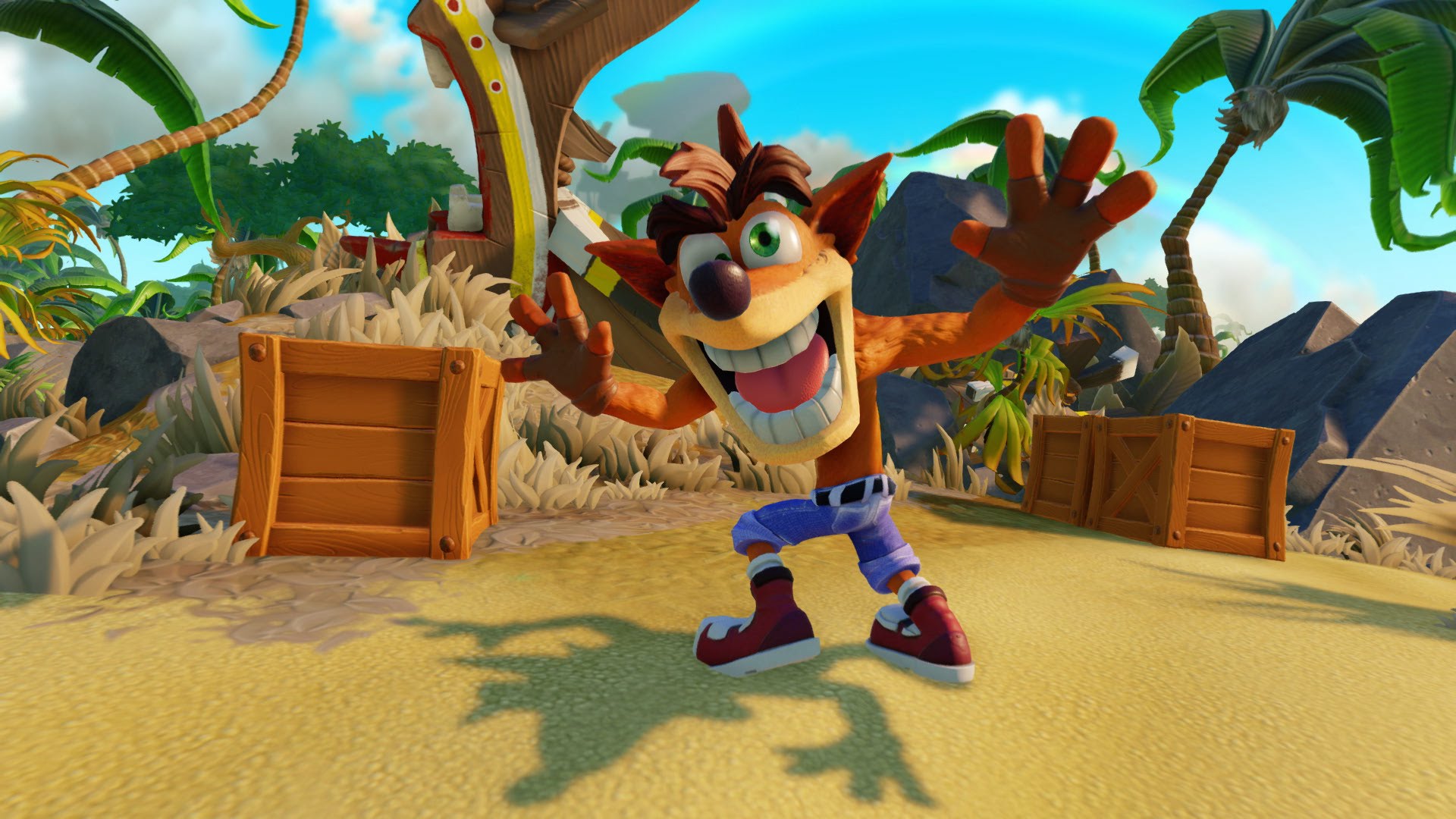
Crash Bandicoot made his long anticipated return to gaming as a character in Skylanders Imaginators. It wasn't exactly what fans were waiting for, but since they knew remakes of the original trilogy were in development, they were able to enjoy the guest appearance for what it was.
-
Crash Bandicoot N. Sane Trilogy (2017)

After all these years, Vicarious Visions is finally getting to work on a Crash Bandicoot platformer for consoles. It's fitting that the studio finally gets a shot, and if done well, the remake could signal a great comeback for gaming's most beloved bandicoot. People are excited for the N. Sane Trilogy, and it's shaping up to be one of the year's most anticipated games.
